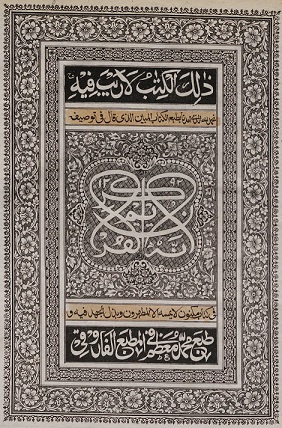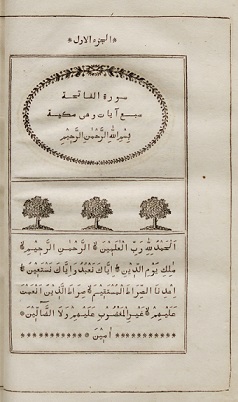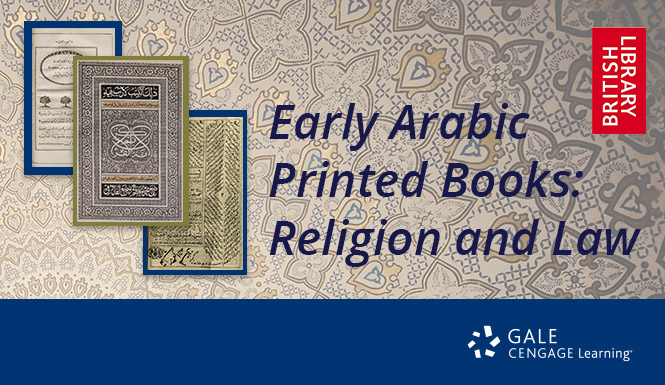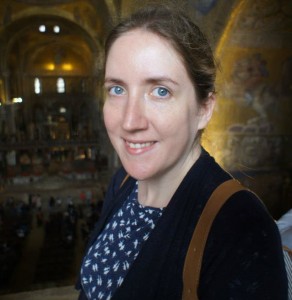by Ellie Hawkes
One of the best things about being Product Editor on the Early Arabic Printed Books project is being exposed to works that I have never encountered before. Having worked on rare book digitization projects many times in the past, it’s a real treat to work on something so different, so challenging, and so beautiful. Below are some of the works that are particular highlights to me.

Many of the Qur’ans in this collection feature outstanding examples of calligraphy and geometric design. I could have selected any such Qur’an but this stood out in particular for its symmetry and the enormous level of detail in the border. Each flower, leaf and stem is beautifully drawn, the increasing level of detail drawing the eye to the central text, which reads “The Noble Qur’an”.
This work is a Qur’an in Arabic, with marginal notes and introductory tracts in Arabic and Persian. The marginal notes refer to pauses to be made whilst reciting the text, and on the orthography of the text. The introductory tracts describe the benefits of studying the Qur’an, as well as information on recitation and pronunciation.
![خلاصة مع شرح المير مع ترحمۀ فارسي وأفغاني [Khulaṣat Kaydānī], Kaydānī. Mumbai, 1886. Shelfmark 14519.e.41(3) http://tinyurl.galegroup.com/tinyurl/tsdi7](https://blog.gale.com/wp-content/uploads/2015/12/EAPB-blog-image-21.jpg)
http://tinyurl.galegroup.com/tinyurl/tsdi7
The beautiful calligraphy does not stop at the title page in this archive – many works contain very complex examples of calligraphy within the text itself. This item shows Persian, Pashto and Arabic all on the same page, all connected and related to each other. Seeing text laid out on a page like this was certainly a new experience for me, and a new challenge for our technical team! Fortunately encountering works like this helps to improve our technical processes, which are now so sophisticated they can pick out the Arabic on this page and convert it to searchable data, so users will still be able to search within this text even though it is so complex.
This work is a treatise on prayer according to the Ḥanafī school, accompanied by Persian and Pushtu interlineary translations, with a commentary by Sayyid Sharīf al-Jurjānī, on the margin.

I selected this item for the opposite reason as the treatise above – its simplicity. Whilst still employing a floral theme, it is much less embellished than the work above. This is one of the earlier Arabic printed Qur’ans in the collection, and I hope that once this collection is used by scholars there will be some research into the development of Arabic printing of the Qur’an, as I’d love to know more about it.
This Qur’an contains a preface in Persian and an introductory treatise in Arabic by Muḥammad ʿAlī Khurāsānī, on the orthography of the text and the rules to be observed in reciting it.
Early Arabic Printed Books: Religion and Law is now available. To delve deeper into this content please click here and we’ll set you up with a free trial.
*Kindly note that our databases and digital archives are only available for institutions not individuals.
[alert-info]
About the Author
Ellie is a Digital Product Editor in Gale’s UK office. Coming from the university sector, Ellie is delighted to continue working with Archives and Academics in a role that broadens horizons and challenges her.
[/alert-info]AIR MAX PLUS


